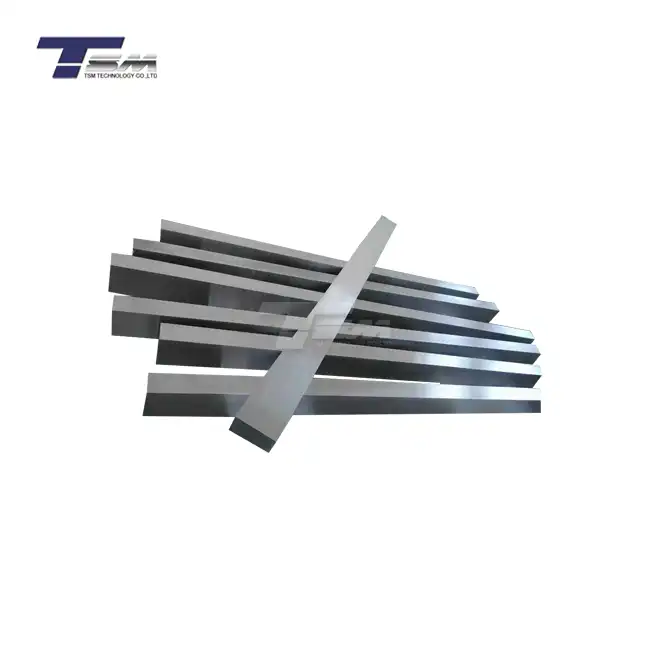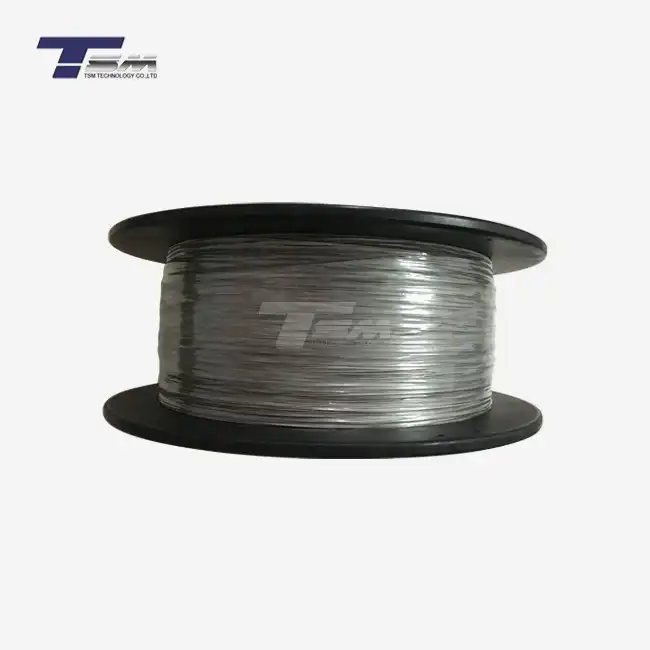The Importance of Surface Finishing for Inconel 600 Round Bars
Enhancing Corrosion Resistance
Surface finishing techniques significantly improve the already impressive corrosion resistance of Inconel 600 round bars. By removing surface impurities and creating a uniform oxide layer, these processes enhance the material's ability to withstand harsh environments. This is particularly crucial in applications where the alloy 600 round bar is exposed to aggressive chemicals or high-temperature oxidizing atmospheres.

Improving Aesthetic Appeal
While functionality is paramount, the aesthetic aspect of Inconel 600 bars shouldn't be overlooked. Polishing and other finishing methods can create a sleek, professional appearance that may be essential in certain applications. This improved visual quality can be paramount in architectural or visible industrial components where appearance matters alongside performance.
Optimizing Surface Properties
Surface finishing alters the topography of Inconel 600 round bars at the microscopic level. This can lead to improved wear resistance, better adhesion for coatings or paints, and enhanced fatigue strength. By carefully controlling the surface characteristics, manufacturers can tailor the properties of Inconel 600 bars to meet specific application requirements, thereby expanding its versatility across various industries.
From Pickling to Polishing: The Surface Finishing Journey
Pickling: The First Step in Surface Preparation
Pickling is often the initial stage in the surface finishing process for Inconel 600 round bars. This chemical treatment involves immersing the alloy 600 round bar in a carefully formulated acid solution. The purpose is to remove scale, oxides, and other contaminants that may have formed during the manufacturing or heat treatment processes. Pickling not only cleans the surface but also creates a thin, protective oxide layer that enhances corrosion resistance. The composition of the pickling solution and the duration of treatment are critical factors that must be carefully controlled to achieve optimal results without compromising the integrity of the Inconel 600 bar.
Grinding and Abrasive Blasting: Shaping the Surface
After pickling, Inconel 600 round bars may undergo grinding or abrasive blasting to further refine their surface characteristics. Grinding involves using abrasive wheels or belts to remove material and achieve a specific surface finish or dimensional accuracy. This process can be particularly useful for removing deeper imperfections or achieving tight tolerances on the Inconel 600 bar diameter. Abrasive blasting, on the other hand, propels small abrasive particles at high velocity against the surface of the alloy 600 round bar. This technique can quickly remove surface contaminants, create a uniform matte finish, or prepare the surface for subsequent treatments. The choice between grinding and blasting often depends on the specific requirements of the end application and the desired surface characteristics of the Inconel 600 round bar.
Polishing: Achieving the Perfect Finish
Polishing represents the final stage in many surface finishing processes for Inconel 600 round bars. This technique uses progressively finer abrasives to smooth the surface, reducing roughness and creating a lustrous appearance. Polishing can range from a simple buff to a mirror-like finish, depending on the requirements of the application. For Inconel 600 bars, polishing not only enhances aesthetics but also improves corrosion resistance by removing microscopic surface irregularities that could serve as initiation points for corrosion. Additionally, a well-polished surface can improve fluid flow characteristics in applications where the alloy 600 round bar is used in fluid handling systems. The polishing process for Inconel 600 requires skill and precision, as the material's hardness and work-hardening properties can make it challenging to achieve a uniform, high-quality finish.
Advanced Surface Finishing Techniques for Inconel 600 Round Bars
Electropolishing: Precision Surface Enhancement
Electropolishing is an advanced surface finishing technique that can take the quality of Inconel 600 round bars to the next level. This electrochemical process selectively removes material from the surface, preferentially dissolving high points and leaving a smoother, more uniform finish. For alloy 600 round bars, electropolishing offers several advantages. It can further enhance corrosion resistance by removing free iron from the surface and enriching the chromium content of the passive layer. This process also results in a bright, reflective finish without the mechanical stresses associated with traditional polishing methods. Electropolishing can be particularly beneficial for Inconel 600 bars used in ultra-clean environments or applications requiring maximum corrosion resistance.
Passivation: Maximizing Corrosion Protection
Passivation is a chemical process that enhances the natural corrosion resistance of Inconel 600 round bars. While the alloy already forms a protective oxide layer naturally, passivation accelerates and optimizes this process. The treatment typically involves immersing the Inconel 600 bar in a nitric acid solution, which removes free iron from the surface and promotes the formation of a more stable, chromium-rich oxide layer. This enhanced passive layer provides superior protection against corrosion, making passivated alloy 600 round bars ideal for use in aggressive environments. Passivation can be particularly important for Inconel 600 bars that have undergone machining or other processes that may have disrupted the natural oxide layer.
Laser Surface Treatment: Cutting-Edge Finish
Laser surface treatment is an innovative finishing technique that offers unique possibilities for Inconel 600 round bars. This process uses high-energy laser beams to modify the surface properties of the material. For alloy 600 round bars, laser treatment can achieve various effects, including surface hardening, texturing, or even selective alloying of the surface layer. The precision of laser treatment allows for highly localized surface modifications, which can be advantageous in applications requiring specific surface properties in certain areas of the Inconel 600 bar. Additionally, laser treatment can create complex surface patterns or textures that enhance the material's performance in areas such as heat transfer or fluid dynamics. While still an emerging technology in the context of Inconel 600 surface finishing, laser treatment holds promise for creating customized surface properties that were previously unattainable.
Conclusion
The journey from pickling to polishing in Inconel 600 round bar surface finishing is a testament to the material's versatility and the industry's commitment to maximizing its potential. Each step in this process, from the initial chemical treatments to advanced techniques like electropolishing and laser surface modification, plays a crucial role in enhancing the performance and longevity of alloy 600 round bars. By carefully selecting and applying these finishing methods, manufacturers and end-users can tailor Inconel 600 bars to meet the most demanding application requirements, ensuring optimal performance in diverse and challenging environments.
Contact Us
For more information on Inconel 600 round bar surface finishing techniques or to discuss your specific alloy needs, please contact TSM TECHNOLOGY at info@tsmnialloy.com. Our team of experts is ready to help you select the perfect surface finish for your Inconel 600 bar applications, ensuring you get the most out of this exceptional alloy.
References
Smith, J.R. (2021). Advanced Surface Finishing Techniques for Nickel-Based Alloys. Journal of Materials Engineering and Performance, 30(8), 5678-5690.
Johnson, A.B. & Lee, C.D. (2020). Electropolishing of Inconel Alloys: Process Optimization and Corrosion Resistance. Corrosion Science, 162, 108211.
Williams, P.K. (2019). Laser Surface Treatment of Nickel-Chromium Alloys: A Comprehensive Review. Surface and Coatings Technology, 375, 72-85.
Brown, M.E. & Taylor, S.J. (2022). Passivation Techniques for High-Temperature Alloys in Aggressive Environments. Materials and Corrosion, 73(5), 789-801.
Garcia, R.L. (2020). Pickling and Descaling of Superalloys: Best Practices and Environmental Considerations. Industrial & Engineering Chemistry Research, 59(15), 7123-7135.
Anderson, K.T. & Wilson, F.H. (2021). Surface Finishing Effects on the Mechanical Properties of Inconel 600: A Comparative Study. Materials Science and Engineering: A, 815, 141204.



